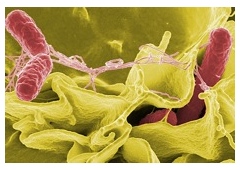
New WHO report explores global impact of foodborne disease
Food in Canada
Food In Canada Food Safety WHO World Health OrganizationAccording to a new report from the World Health Organization, almost one-third of all deaths from foodborne diseases are in children under the age of five

According to a new report from the World Health Organization (WHO), almost one-third (30 per cent) of all deaths from foodborne diseases are in children under the age of five years, even though they make up only nine per cent of the global population.
This is just one of the findings from WHO’s recent report, called “Estimates of the global burden of foodborne diseases,” which is being touted as the most comprehensive report to date on the impact of contaminated food on health and well-being.
The report found that every year as many as 600 million people in the world, or almost one in 10, become ill after consuming contaminated food. Of these, 420,000 people die, including 125,000 children under the age of five.
“Until now, estimates of foodborne diseases were vague and imprecise. This concealed the true human costs of contaminated food. This report sets the record straight,” says Margaret Chan, director-general of WHO. “Knowing which foodborne pathogens are causing the biggest problems in which parts of the world can generate targeted action by the public, governments, and the food industry.”
While foodborne disease is a global public health concern, WHO found that African and South-East Asia regions have the highest incidence and highest death rates as a result of foodborne disease.
“These estimates are the result of a decade of work, including input from more than 100 experts from around the world. They are conservative, and more needs to be done to improve the availability of data on the burden of foodborne diseases,” says Kazuaki Miyagishima, director of WHO’s Department of Food Safety and Zoonoses. “But based on what we know now, it is apparent that the global burden of foodborne diseases is considerable, affecting people all over the world – particularly children under five years of age and people in low-income areas.”
Diarrhoeal diseases are responsible for more than half of foodborne diseases globally, causing 550 million to become ill and 230,000 deaths each year.
Children are at particular risk of foodborne diarrhoeal diseases, with 220 million falling ill and 96,000 dying every year. Diarrhoea is often caused by eating raw or undercooked meat, eggs, fresh produce and dairy products contaminated by norovirus, Campylobacter, non-typhoidal Salmonella and pathogenic E. coli.
Other major contributors to the global burden of foodborne diseases are typhoid fever, hepatitis A, Taenia solium (a tapeworm), and aflatoxin (produced by mould on grain).
Some diseases, such as those caused by non-typhoidal Salmonella, are a public health concern in all regions of the world. Other diseases, such as typhoid fever, foodborne cholera, and those caused by pathogenic E. coli, are much more common in low-income countries. Campylobacter, on the other hand, is a significant pathogen in high-income countries.
Print this page